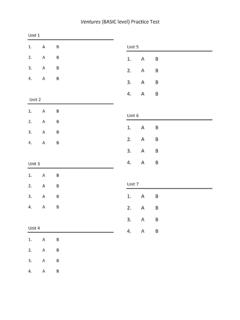Transcription of Investment Analysis: Measuring the Value of Vehicle Wraps
1 ARD | Ventures Copyright 2003 ARD Ventures 1 Measuring the Value of Vehicle Wraps About the Authors: ARD Ventures is a venture capital firm that provides detailed market research and analysis on sectors that it considers for Investment opportunities. In 1993, SuperGraphics, Inc., wrapped an entire bus in vinyl adhesive product introduced by 3M Company. Investment Analysis: Measuring the Value of Vehicle Wraps A New Segment of the Outdoor Advertising Market By Ryan Hubbard, ARD Ventures Vehicle Wraps , a growing trend in outdoor advertising, is a very rapidly growing sector of the advertising industry. The purpose of this white paper is to describe the market, clearly identify the Value proposition for advertisers, and highlight three different companies that are approaching the market from different angles. There are numerous questions to answer at a high level about the market.
2 How can this new mobile media be measured? How does it compare to traditional outdoor advertising? What affect will it have on the brand? These and many other questions are common concerns that will need to be addressed prior to addition of Wrapped Vehicles to an advertising agency s Media Plan. This paper s objective is to aid in understanding the measurement and effectiveness of passenger vehicles wrapped in advertising. We will provide background of the industry, beginning with the introduction of vinyl graphics in the early 90 s, which paved the way for the use of passenger vehicles as moving billboards. From there, an overview of how traditional advertising is bought and sold will help relate those concepts to this newest form of outdoor marketing. Next, we will discuss the positive impact this head turning medium has on the advertiser s brand. Finally, we will conclude with a brief overview of three different companies that have three unique approaches to this exciting new market.
3 Wrapped Vehicles-A Brief History The billboard has been around over 100 years and the poster dates back literally centuries. While locations have been limited by regulation, the creative applications have been endless. Billboards really came of age in the 1950 s as the national highway system was developed and automobile travel became the American standard for transportation. Until the 1990s, most billboards were hand-painted plywood with inconsistent quality. Worse, when paint faded and wood chipped, billboards became eyesores. Today, computer-painting technology has all but eliminated the old-fashioned sign painter; plywood has given way to durable vinyl that can be cut to any size, and then rolled into tubes for easy shipping. In 1993, SuperGraphics, Inc., a Silicon Valley based pioneer company in digital imaging, did the previously unthinkable. An entire bus was wrapped with a new vinyl adhesive product introduced by 3M Company.
4 The bus was immediately turned into a huge rolling Crystal Pepsi ad that people could not help but notice. In comparison to the appearance of the average city bus, most consumers considered it a nice distraction. This advertising ARD | Ventures Copyright 2003 ARD Ventures 2 Measuring the Value of Vehicle Wraps Fifty years of TV dominance has had an effect on measurements innovation gained popularity among many advertisers. Bus Wraps and other creative outdoor advertising ideas are all in response to the lack of available outdoor advertising space. Soon, tractor-trailer owners began covering their fleets with full-color images selling the products and/or services of other companies. In 2000, this mobile advertisement trend began spreading to privately owned vehicles. Numerous websites offer free cars or monthly payments for those willing to wrap their vehicles in an advertiser s message and logo.
5 Some of these services also offer dedicated driver programs. This not only places the message in front of target consumers, but also provides the opportunity for direct customer contact through coupon distribution, sampling, and other promotional tactics. The vehicles can be equipped with Global Positioning Satellite tracking systems (GPS). This provides detailed Vehicle tracking information and in some cases, audited reports necessary for monitoring the effectiveness of an advertising campaign. Accordingly, there is still an extremely limited supply of available data on the efficiency or impression rates attained by mobile Vehicle advertisements. Measuring Vehicle Wraps Measuring the exposure of Vehicle Wraps is easier after an overview of how traditional advertising is bought and sold. The process of selecting time and space, in various media, for advertising in order to accomplish marketing objectives is known as media planning.
6 Media planners often use three terms in describing a planning process: objective, strategy, and tactic. Although each type of media has unique characteristics, fifty years of TV dominance has had an effect on measurements. The TV standards: audience, target, reach, and frequency are all used for planning and buying. The target audience is often defined by demographics, product usage and psychographics. Reach refers to the unduplicated proportion of an audience that is exposed to a media schedule (not necessarily to the advertising message) at least once during a designated time period (usually four weeks). Frequency refers to the number of times within a given period of time an audience is exposed to a media schedule. A frequency of , for example, means that the target audience is exposed to a media schedule three times during a given period of time. Of course, not all audience members are exposed exactly three times; some may be exposed more than three times and some less.
7 A frequency distribution shows how many audience members are exposed at each level of frequency. With a frequency distribution, a media planner can determine effective frequency and effective reach. Effective frequency is defined as the level of frequency that is necessary to achieve the desired communication goals. Effective reach is the reach at the level of effective frequency. Gross rating points (GRPs) are the product of reach and frequency, representing the total gross delivery of a media schedule to the target audience. ARD | Ventures Copyright 2003 ARD Ventures 3 Measuring the Value of Vehicle Wraps The biggest mistake is comparing the measurement of out-of-home with that of other media. Audience Measurement Audience size is the currency of advertising media; the basic measurement is exposure. Technically, exposure means, open eyes or listening ears.
8 However, exposure measurements are different for each medium. In magazines, for example, persons exposed to a publication are counted if they say they read the publication. But persons exposed to a television program are counted only if they define themselves to be watching TV and press a button on a Measuring device known as a people meter . People who are not acquainted with measurements of media audiences are surprised to learn that audience numbers obtained from media research such as Simons Market Research Bureau, Mediamark Research Inc. (MRI), or Nielsen Media Research do not count the number of people or households exposed to the advertisements. Even some experienced professionals forget or never knew that media exposure measurements do not show how many persons have read advertisements. And it cannot be assumed that a large audience for a media Vehicle automatically indicates that a large number of individuals saw a client s advertisement.
9 Perhaps the biggest mistake agencies make is comparing the measurement of out-of-home advertising with that of other media. Out-of-home is not like , which has programs carrying commercials, radio which has stations, or print which has editorial carrying ads. Outdoor has only the advertising. In concept, an outdoor exposure is an ad exposure, while a or print exposure may not be. Media Costs Just as the statement Potatoes: $ becomes meaningful when expressed as Potatoes: $ , advertisers use CPM (cost per thousand impressions) and CPP (cost per rating point) to compare media costs. CPM is used for both print and electronic media while CPP is more popular for electronic media. CPM is calculated by multiplying the unit cost of a media type by 1,000 and dividing the result by the audience size. The unit cost of a media type is the cost for a single ad placement in that venue. For example, if a 30-second commercial in a program costs $5,000 and the program has an audience of 250,000, then CPM for the commercial will be $20.
10 CPP is calculated by dividing the unit cost of the media by the rating. If a 30-second commercial in a TV program costs $5,000 and the program has a rating of 10 in the market, CPP for the commercial will be $500. CPP can also be used to compare newspaper or magazine costs if the audience is described as a percentage. Out-of-Home measurements There are two approaches for Measuring the audience of Outdoor: site-centric and consumer-centric. Site-centric measures start with ARD | Ventures Copyright 2003 ARD Ventures 4 Measuring the Value of Vehicle Wraps One of the big advantages that Transit Advertising has over traditional Out-of-home is placement. the location of the outdoor display and count the passing people. Consumer-centric measures start with a sample of people and count the outdoor displays they pass. The Traffic Audit Bureau ( ) counts the cars passing each billboard on an average day in addition to validating outdoor site placements.





